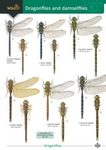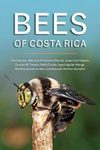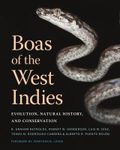Field / Identification Guide
By: Dennis R Paulson(Author), William A Haber(Author)
401 pages, colour photos
The first guide of its kind, Dragonflies and Damselflies of Costa Rica gives readers the information they need to identify nearly every species in the country.
![Dragonflies and Damselflies of Costa Rica Dragonflies and Damselflies of Costa Rica]()
Click to have a closer look
About this book
Customer reviews
Biography
Related titles
About this book
Among the largest of all insects, dragonflies and damselflies are conspicuous. Active during the day, often brightly coloured, and extremely photogenic – something about their appearance and dashing flight suggests a primaeval world of tree ferns and dinosaurs.
The first guide of its kind, this book includes an in-depth introduction with an overview of Costa Rican biodiversity and illustrated morphological terms. The species accounts show males and females of most species, detailed illustrations and close-ups of key distinguishing features, and descriptions of habitat, behaviour, and range. Dragonflies and Damselflies of Costa Rica gives readers the information they need to identify nearly every species in the country. Experienced dragonfly fans and new enthusiasts alike will find it an indispensable resource.
Customer Reviews
Biography
Dennis Paulson is a world authority on Odonata, which he has been studying for more than fifty years. His many books include Dragonflies and Damselflies of the West and Dragonflies & Damselflies.
William Haber has been researching insects and plants in Costa Rica since 1972. He has described six new species of Odonata from Costa Rica, with more in the works.
Field / Identification Guide
By: Dennis R Paulson(Author), William A Haber(Author)
401 pages, colour photos
The first guide of its kind, Dragonflies and Damselflies of Costa Rica gives readers the information they need to identify nearly every species in the country.
"Written by two leading authorities, this handsome identification guide to the dragonflies and damselflies of Costa Rica is a first for any Central American country. Naturalists, researchers, and conservationists now have a richly illustrated resource with which to delve further into this important and beneficial group of insects. A splendid addition to the hiker's backpack, it is sure to lure new enthusiasts to the Odonata."
– Ken Tennessen, author of Dragonfly Nymphs of North America
"This field guide covers the entire odonate fauna of Costa Rica, a biologically diverse country with nearly 300 species. It meets the high standards of Dennis Paulson's previous photographic guides to North American species. This will certainly become essential reading for anyone with an interest in the insects of Costa Rica and, in fact, much of Central America and northern South America."
– Michael May, coauthor of Damselflies of North America



































